A Simple Nozzle-Diffuser Duct Used as a Kuroshio Energy Harvester
Abstract
:1. Introduction
1.1. Kuroshio Current
1.2. Development for Ocean Current Energy Harvester
2. Numerical Method
2.1. Domain and Convergence Tests
2.2. The Use of Moving Reference Frame Scheme
2.3. Mesh around Duct and Corresponding y+
2.4. Drag and Added Mass Coefficients
Validation of the Added Mass Coefficient of the Duct
3. Results and Discussion
3.1. Single Nozzle-Diffusor Duct (NDD) Anchored to the Seabed
3.1.1. Duct Weight and Center of Gravity
3.1.2. Responses to Waves and Current
3.2. Megawatt Kuroshio Energy Harvesting System
4. Conclusions
- The hydrodynamic coefficients, including drag and add-mass coefficients of the duct in translational and rotational motions, were calculated by using the simulation data of ANSYS Fluent. The results agree well with the analytical values of a smooth sphere. It provides a method to calculate the added-mass coefficient for objects with more complex geometry.
- The duct model for the simulation was constructed by OrcaFlex. The weight of the duct was defined as a fraction of its buoyant force. After different weight was assigned to the duct, the functional relationship between the position of the center of gravity of the duct and the resultant pitch angle was established.
- Simulation results showed that the duct was stable under normal wave conditions, even when its submerged depth was small. Under storm wave conditions, however, large responses in all 6DoF motions were observed when the duct was close to the sea surface. All the translational responses reached as high as 4–6 m, while the rotational responses, particularly yaw, exceeded 10°. It indicated that the duct needed to dive into deeper water depth to sustain the stability of the duct under storm wave conditions.
- All the translational and rotational responses diminished as the duct dived into deeper water; the translational movements were less than 1.5 m, and the rotational angles were smaller than 5° under 90° storm wave conditions when the submerged depth of the duct was 100 m below the sea surface. The duct demonstrated high stability and the capability of obtaining high PTO. Since the duct would obtain large PTO when its rotational response is smaller than 5°, it is then contemplated that the duct should dive into a depth at least 90 m below the sea surface under storm wave conditions.
- According to the deployment experience at Penghu in 2013, the square NDD can harvest 5 kW in Penghu water with a flow velocity of 1.25 m/s, which is 1.25 times that of Kuroshio’s current speed. The numerical study indicated that the proposed NDD equipped with a NACA 6409 turbine is able to obtain a high PTO value of 15 kW in Kuroshio’s water. Therefore, the proposed energy harvester for Kuroshio power is feasible. To generate electricity as a megawatt power plant, 70 NDDs are needed to anchor to the seabed at the same time. To make the idea more practicable, some type of platform acting as a carrier to reduce construction costs is anticipated. The conceptual design of a spar platform is then suggested. The ideal Spar type platform has been reported [22], and the megawatt Kuroshio power plant is highly possible to be deployed in the near future.
Author Contributions
Funding
Institutional Review Board Statement
Informed Consent Statement
Data Availability Statement
Acknowledgments
Conflicts of Interest
References
- Bureau of Energy, Ministry of Economic Affairs, Taiwan. Renewable Electricity Capacity & Generation. 2019. Available online: https://www.moeaboe.gov.tw/ECW/populace/web_book/wHandWebReports_File.ashx?type=pdf&book_code=M_CH&chapter_code=L&report_code=02 (accessed on 27 August 2021).
- Bedard, R. Overview: EPRI Ocean Energy Program, The Possibilities in California; Electric Power Research Institute: Palo Alto, CA, USA, 2006. [Google Scholar]
- Chen, F. Kuroshio Power Plant Development Plan. Renew. Sustain. Energy Rev. 2010, 14, 2655–2668. [Google Scholar] [CrossRef]
- Lo, H.-Y. Dynamic Analysis of Current Turbine System. Master’s Thesis, National Taiwan Ocean University, Taiwan, 2017. [Google Scholar]
- Wu, J.-T.; Chen, J.-H.; Hsin, C.-Y.; Chiu, F.-C. A computational study on system dynamics of an ocean current turbine. J. Hydrodyn. 2018, 30, 395–402. [Google Scholar] [CrossRef]
- Chen, B.-F.; Chen, L.-C.; Huang, C.-C.; Jiang, Z.; Liu, J.-Y.; Lu, S.-Y.; Leu, S.-S.; Tien, W.-M.; Tsai, D.-M.; Wu, S. The deployment of the first tidal energy capture system in Taiwan. Ocean Eng. 2018, 155, 261–277. [Google Scholar] [CrossRef]
- Chen, B.-F.; Huang, C.-W. Nozzle and Diffuser in Drifting Horizontal Turbine Flow. In Proceedings of the 26th International Ocean and Polar Engineering Conference, International Society of Offshore and Polar Engineers, Rhodes, Greece, 26 June–1 July 2016. [Google Scholar]
- Chen, Y.-Y.; Hsu, H.-C.; Bai, C.-Y.; Yang, Y.; Lee, C.-C.; Cheng, H.-K.; Shyue, S.-W.; Li, M.-S.; Hsu, C.-J. Evaluation of Test Platform in the Open Sea and Mounting Test of KW Kuroshio Power-Generating Pilot Facilities. In Proceedings of the 2016 Taiwan Wind Energy Conference, Taipei, Taiwan, 24–26 August 2016. (In Chinese). [Google Scholar]
- NEDO, New Energy and Industrial Technology Development Organization. Available online: http://www.nedo.go.jp/english/news/AA5en_100269.html (accessed on 27 August 2021).
- Minesto, Deep Green Technology. Available online: https://minesto.com/ (accessed on 27 August 2021).
- Huang, L.; Lyu, F. Compact Low-Velocity Ocean Current Energy Harvester Using Magnetic Couplings for Long-Term Scientific Seafloor Observation. J. Mar. Sci. Eng. 2020, 8, 410. [Google Scholar] [CrossRef]
- Ko, D.-H.; Chung, J.; Lee, K.-S.; Park, J.-S.; Yi, J.-H. Current Policy and Technology for Tidal Current Energy in Korea. Energies 2019, 12, 1807. [Google Scholar] [CrossRef] [Green Version]
- Leijon, J.; Forslund, J.; Thomas, K.; Boström, C. Marine Current Energy Converters to Power a Reverse Osmosis Desalination Plant. Energies 2018, 11, 2880. [Google Scholar] [CrossRef] [Green Version]
- Martinez, R.; Gaurier, B.; Ordonez-Sanchez, S.; Facq, J.-V.; Germain, G.; Johnstone, C.; Santic, I.; Salvatore, F.; Davey, T.; Old, C.; et al. Tidal Energy Round Robin Tests: A Comparison of Flow Measurements and Turbine Loading. J. Mar. Sci. Eng. 2021, 9, 425. [Google Scholar] [CrossRef]
- Shirasawa, K.; Minami, J.; Shintake, T. Scale-Model Experiments for the Surface Wave Influence on a Submerged Floating Ocean-Current Turbine. Energies 2017, 10, 702. [Google Scholar] [CrossRef] [Green Version]
- Huang, C.-W. Optimal Design of a Nozzle and Diffuser Duct. Master Thesis, National Sun Yat-sen University, Taiwan, 2016. [Google Scholar]
- Tabor, G.; Gosman, A.D.; Issa, R.I. Numerical simulation of the flow in a mixing vessel stirred by a Rushton turbine. In Institution of Chemical Engineers Symposium Series; Hemisphere Publishing Corporation: Washington, DC, USA, 1996; pp. 25–34. [Google Scholar]
- Zadravec, M.; Basic, S.; Hribersek, M. The influence of rotating domain size in a rotating frame of reference approach for simulation of rotating impeller in a mixing vessel. J. Eng. Sci. Technol. 2007, 2, 126–138. [Google Scholar]
- Kyu, S.P. Fatigue Performance of Deep Water Steel Catenary Riser. Master’s Thesis, Pohang University of Science and Technology, Gyeongsangbuk-do, Korea, 2013. [Google Scholar]
- Lai, R.-Y. Study on the Spectral Properties of Typhoon Generated Waves in Deep Sea. Master’s Thesis, National Taiwan Ocean University, Taiwan, 2015. [Google Scholar]
- Sudhamshu, A.R.; Pandey, M.C.; Sunil, N.; Satish, N.S.; Mugundhan, V.; Velamati, R.K. Numerical study of effect of pitch angle on performance characteristics of a HAWT. Eng. Sci. Technol. Int. J. 2016, 19, 632–641. [Google Scholar]
- Yeh, P.-H.; Tsai, S.-Y.; Chen, W.-R.; Hsu, S.-M.; Chen, B.-F. A platform for Kuroshio Energy Harvesters. Ocean Eng. 2021, 223, 108693. [Google Scholar] [CrossRef]

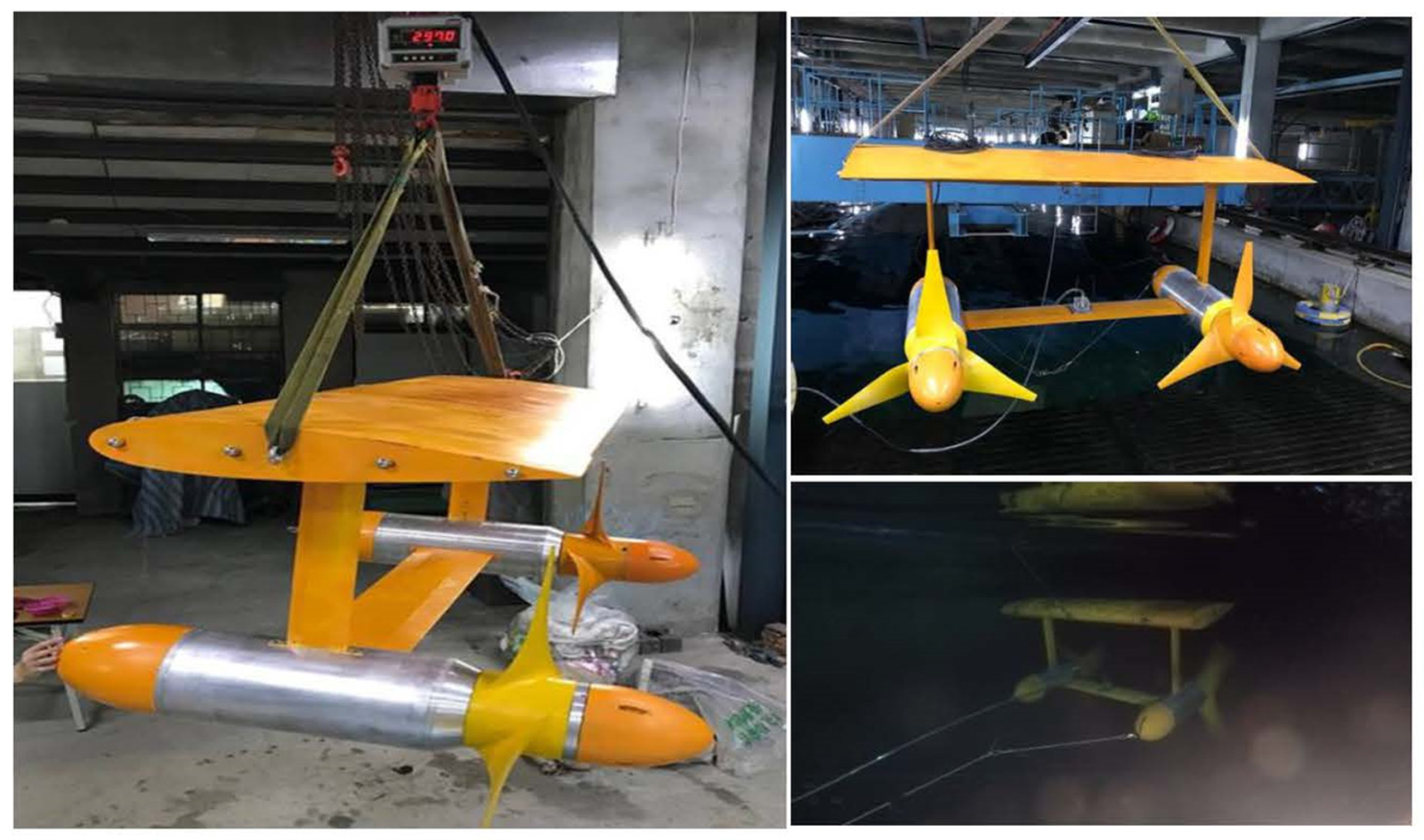

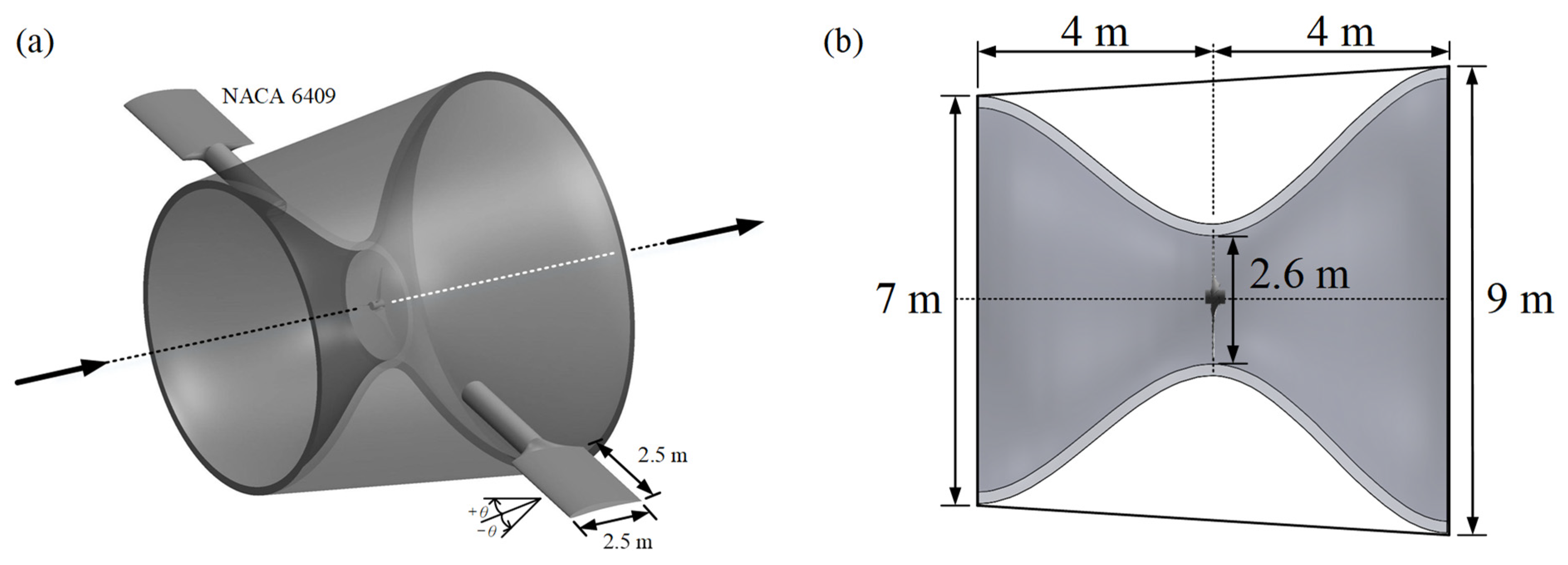
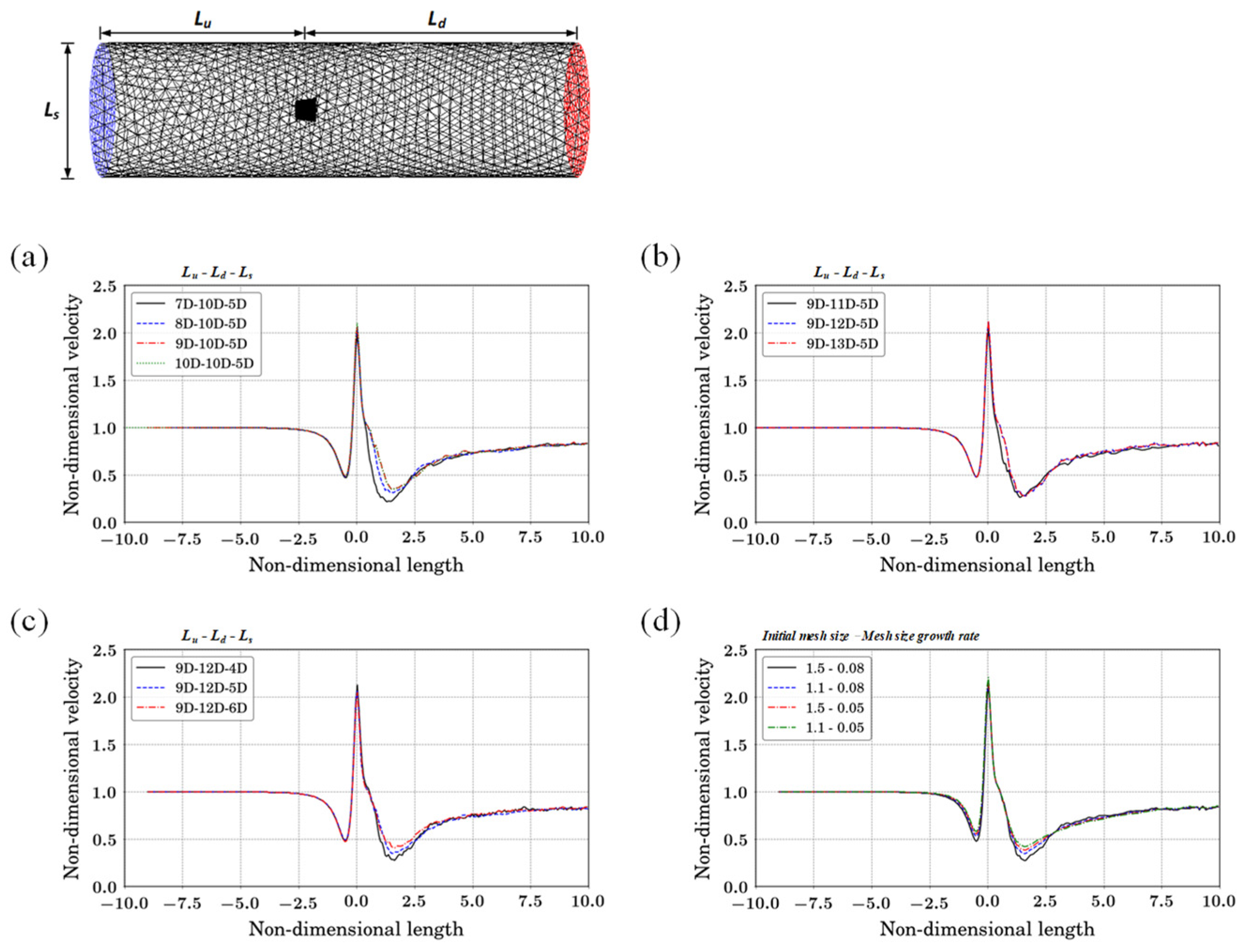

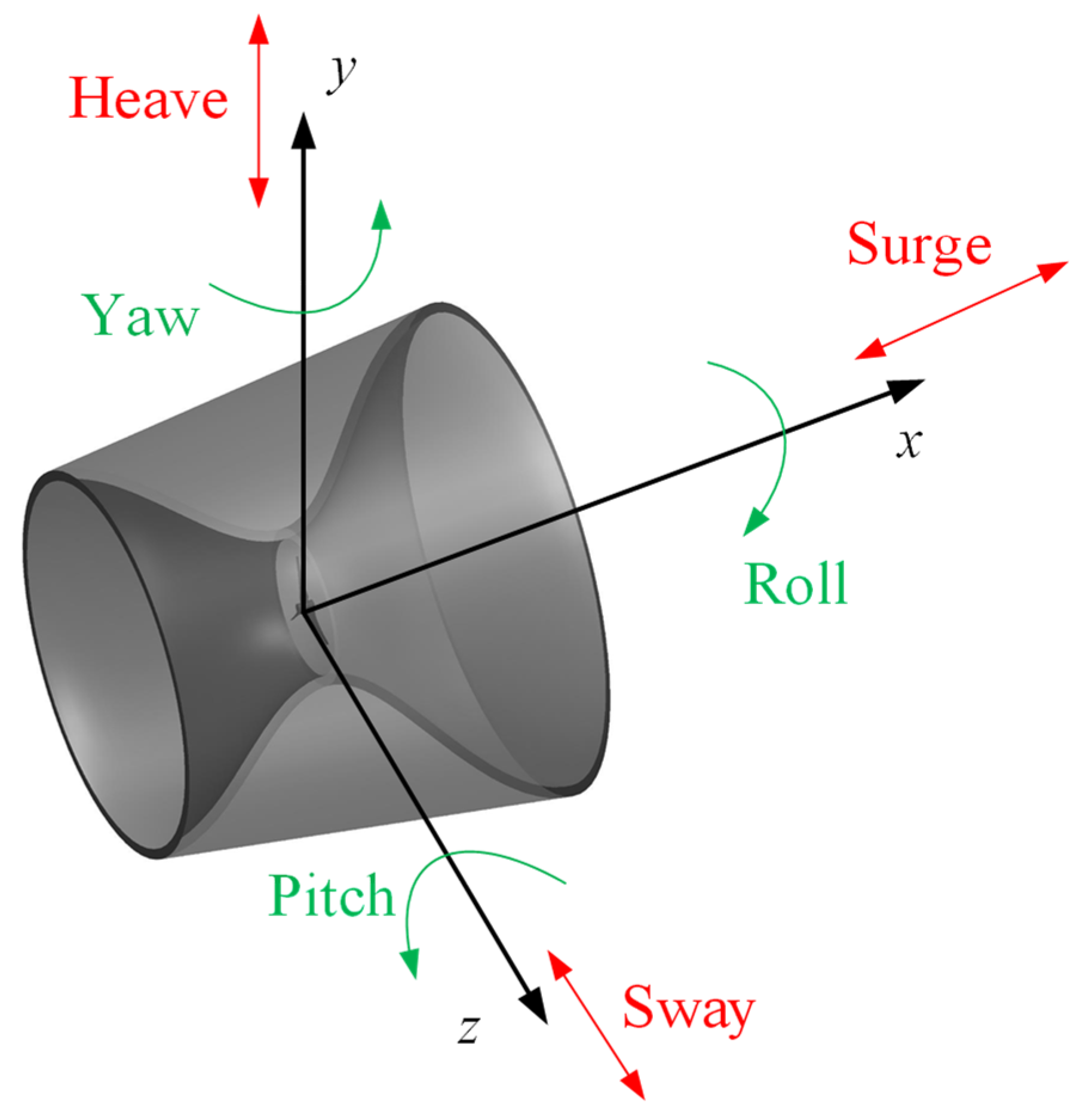
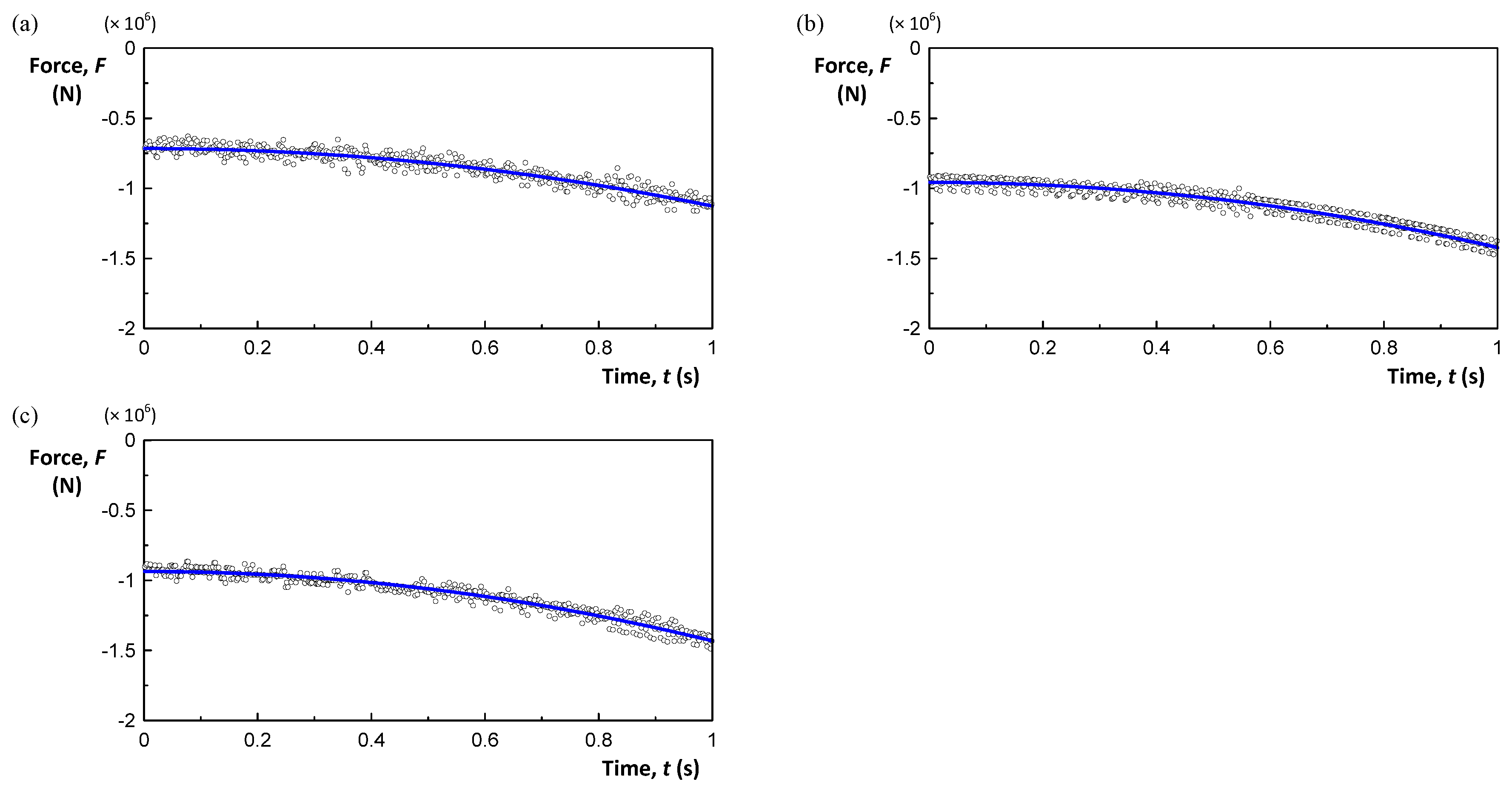
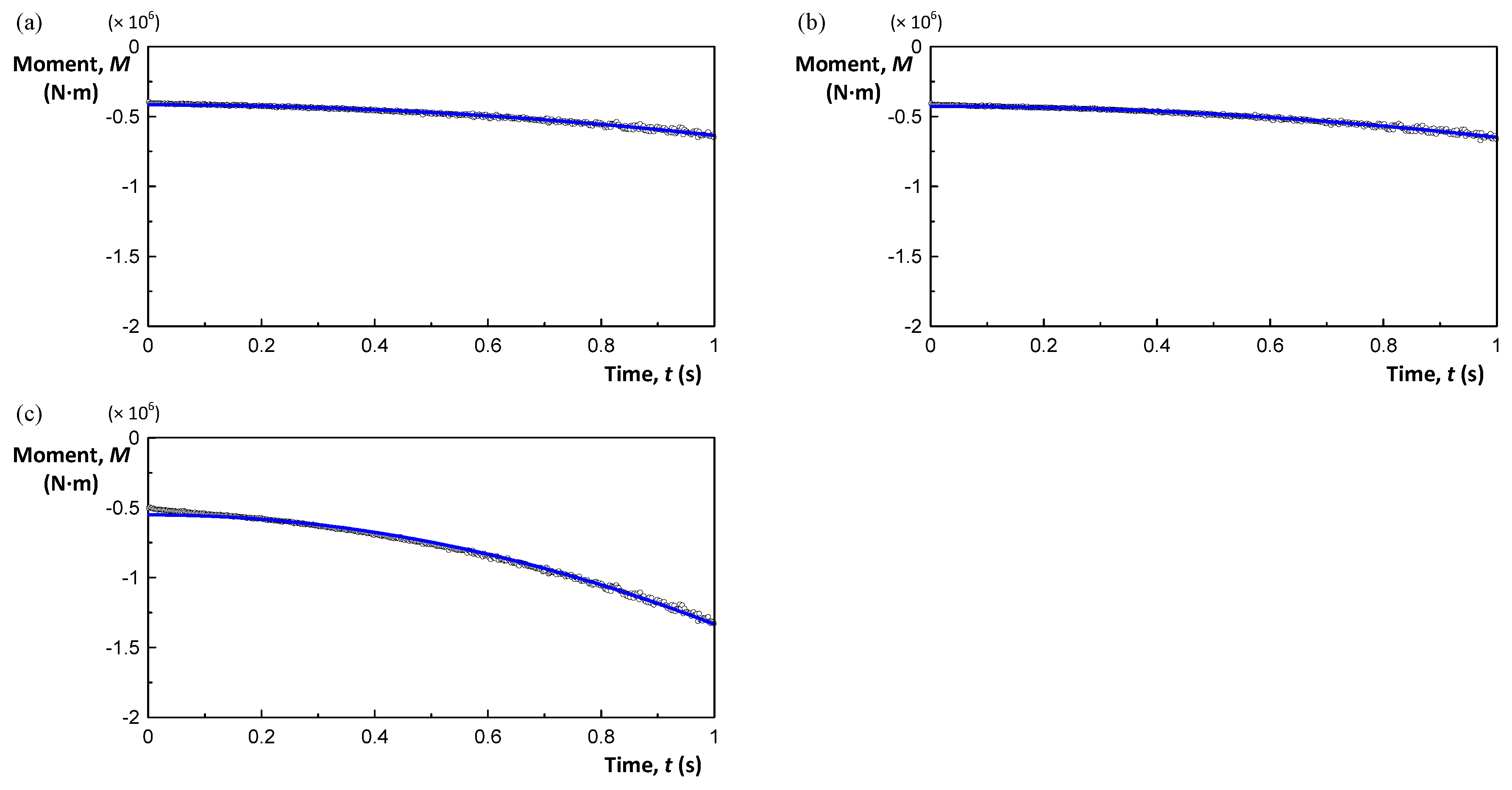
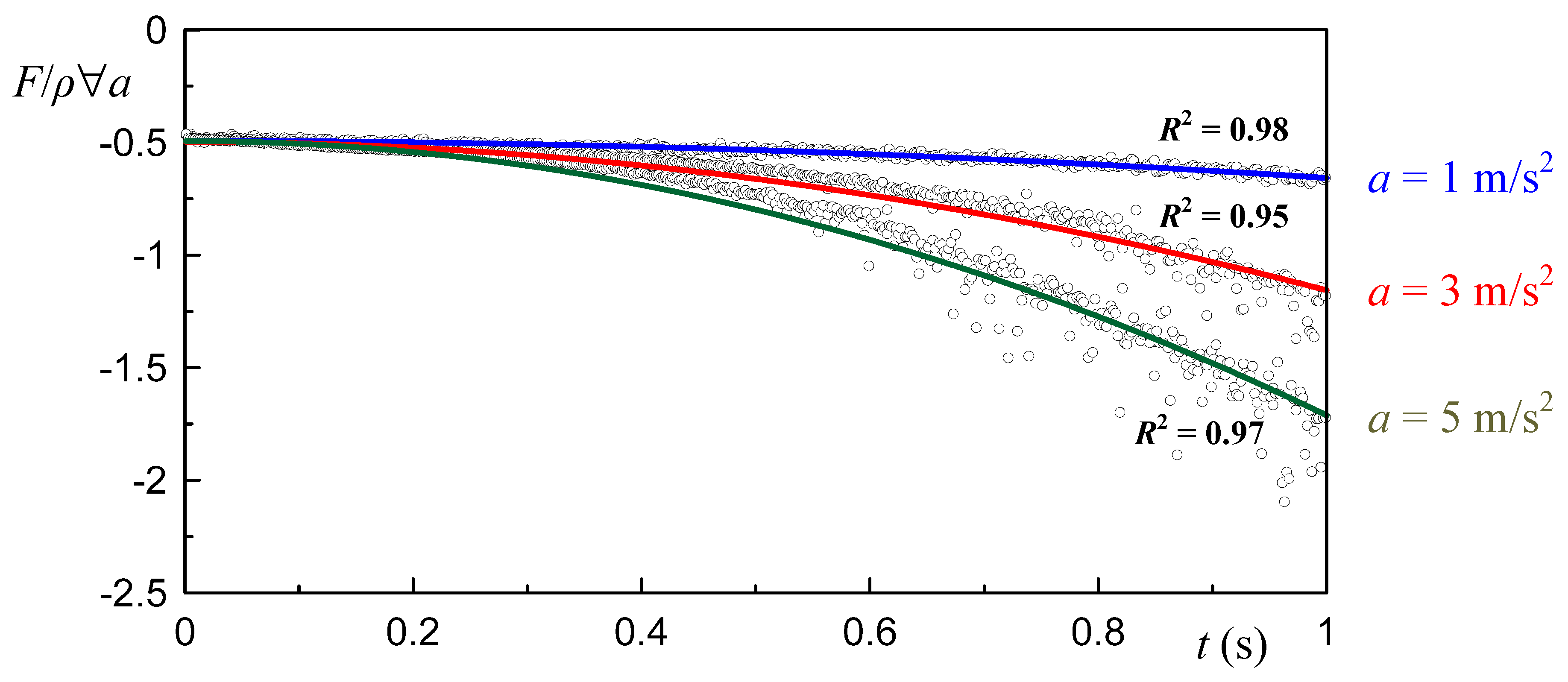

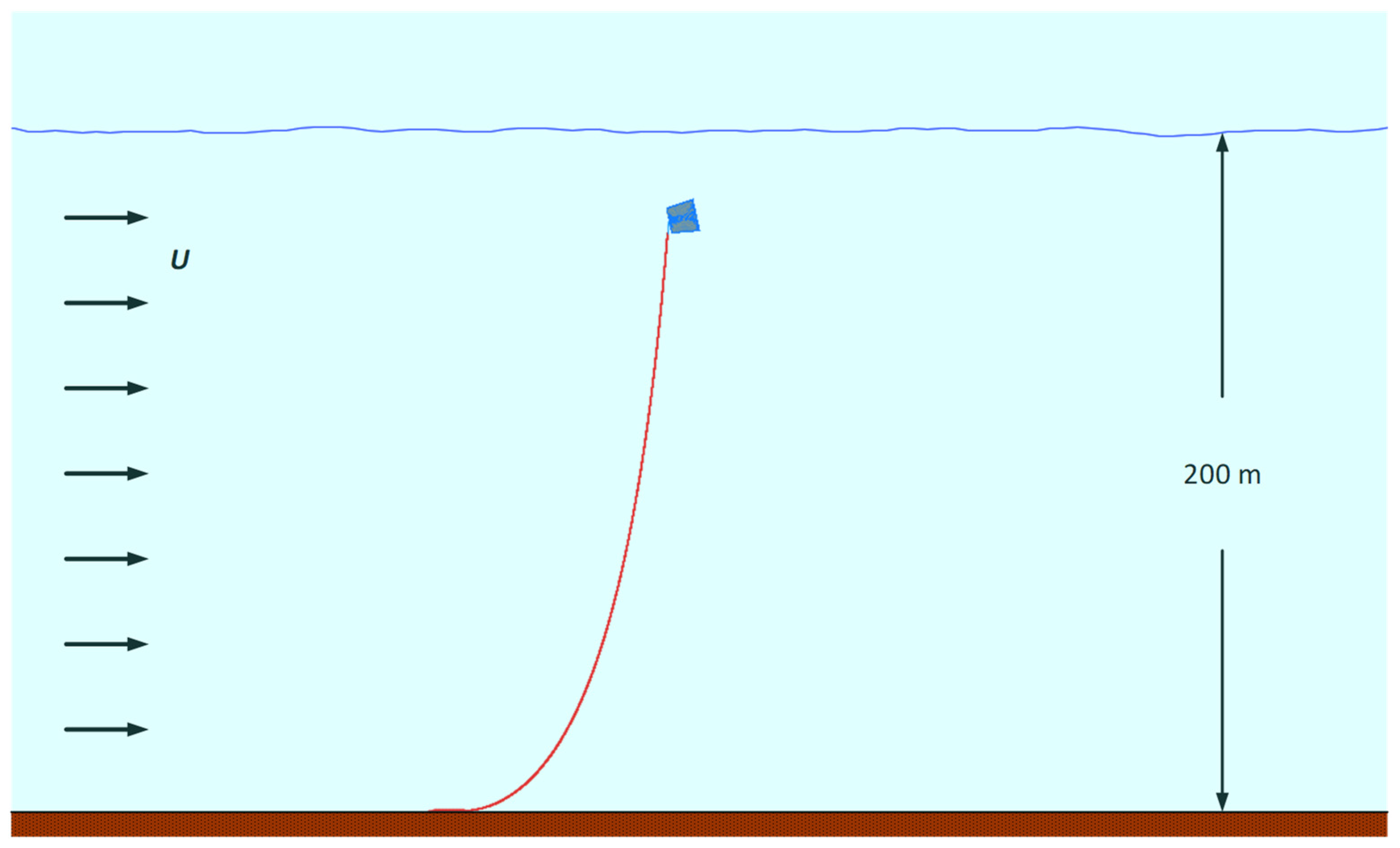
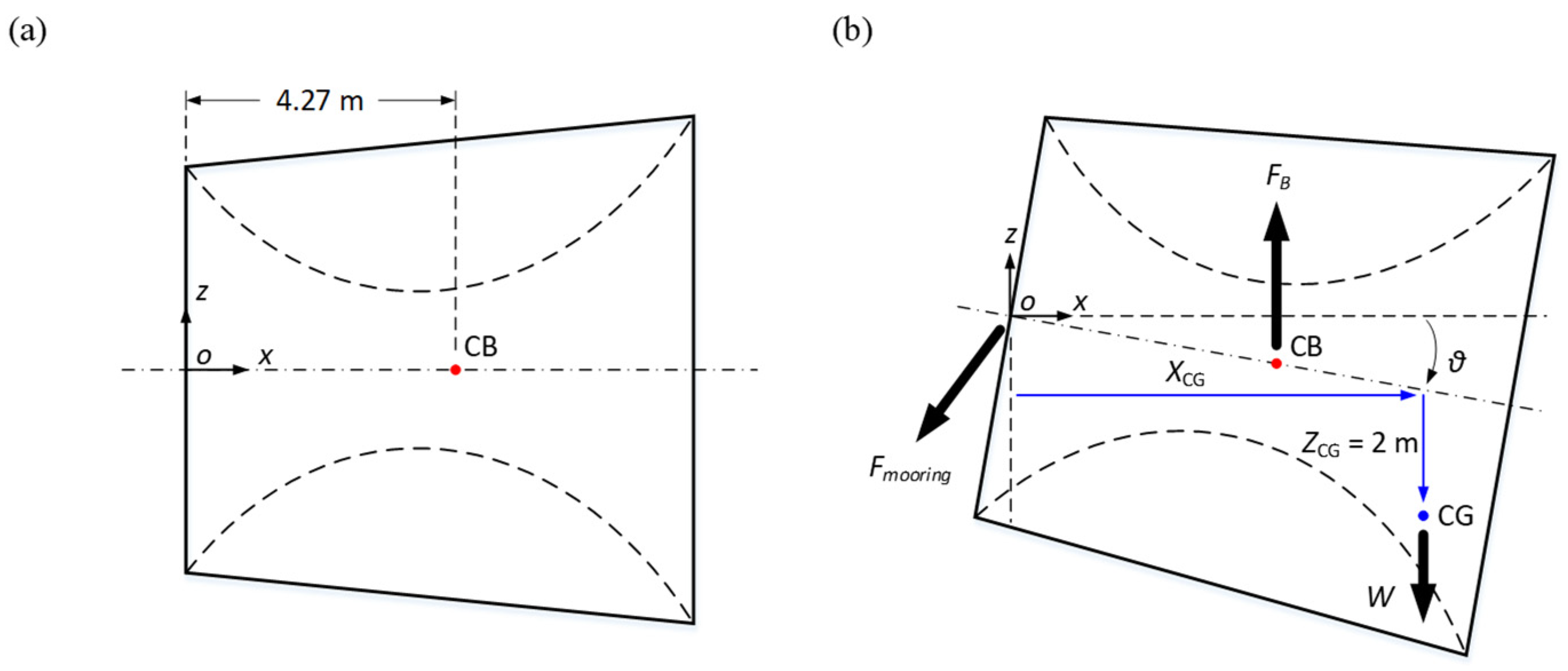
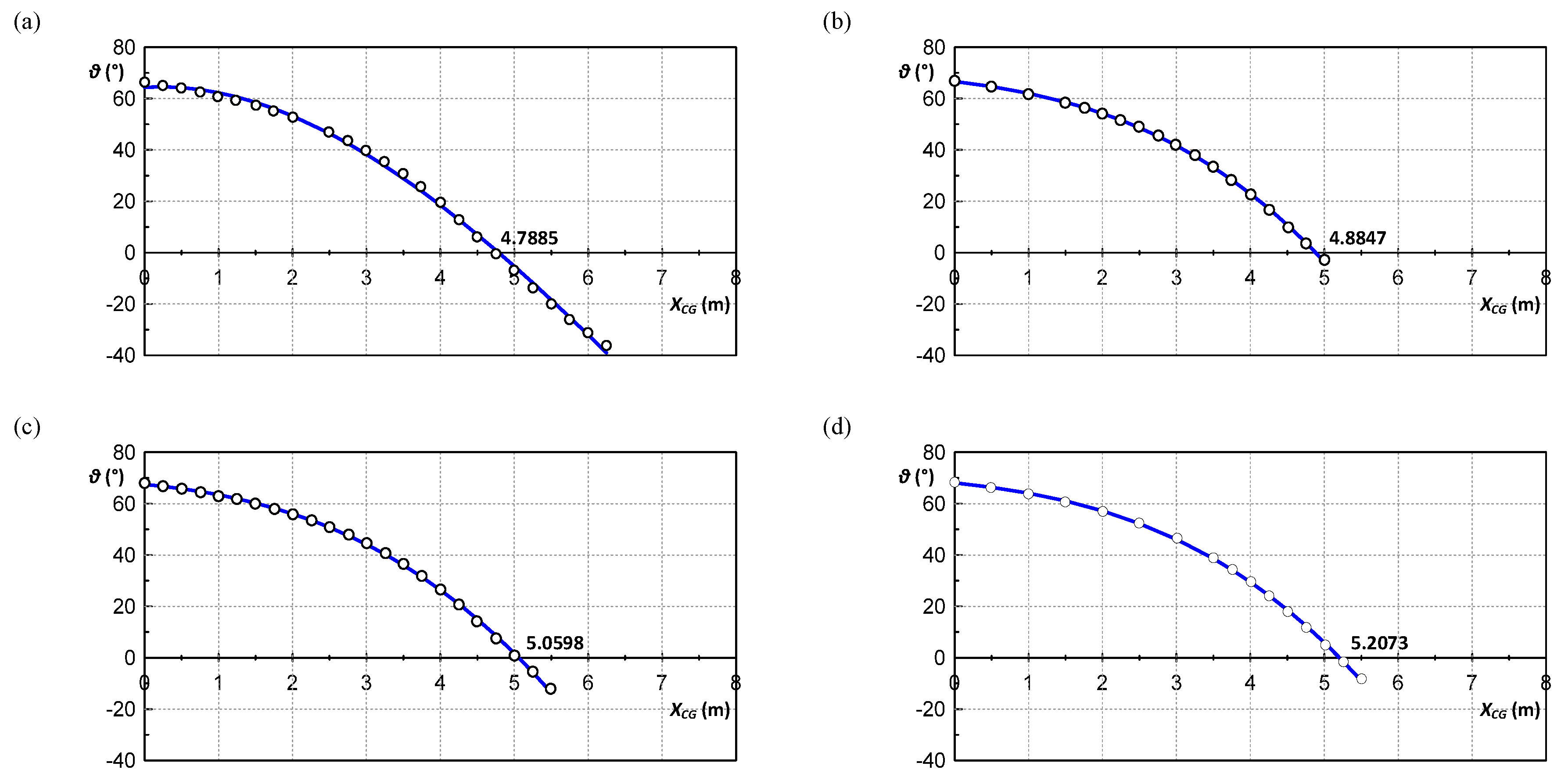
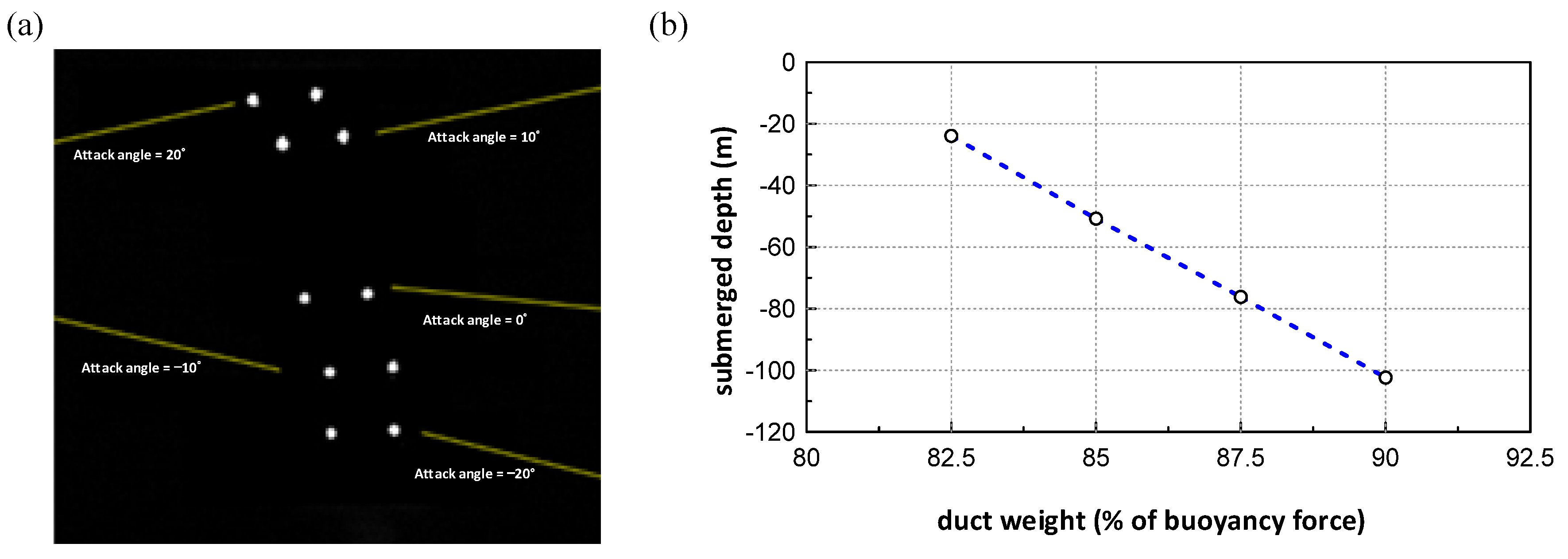
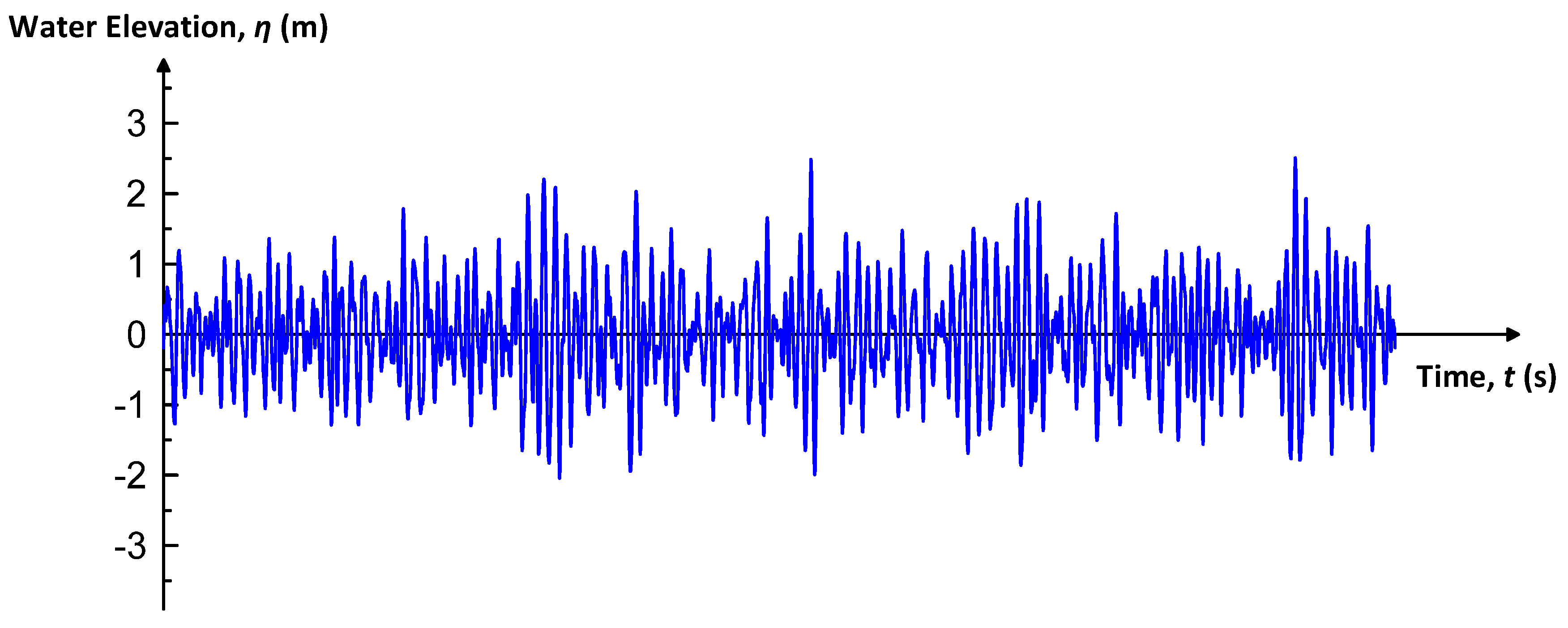
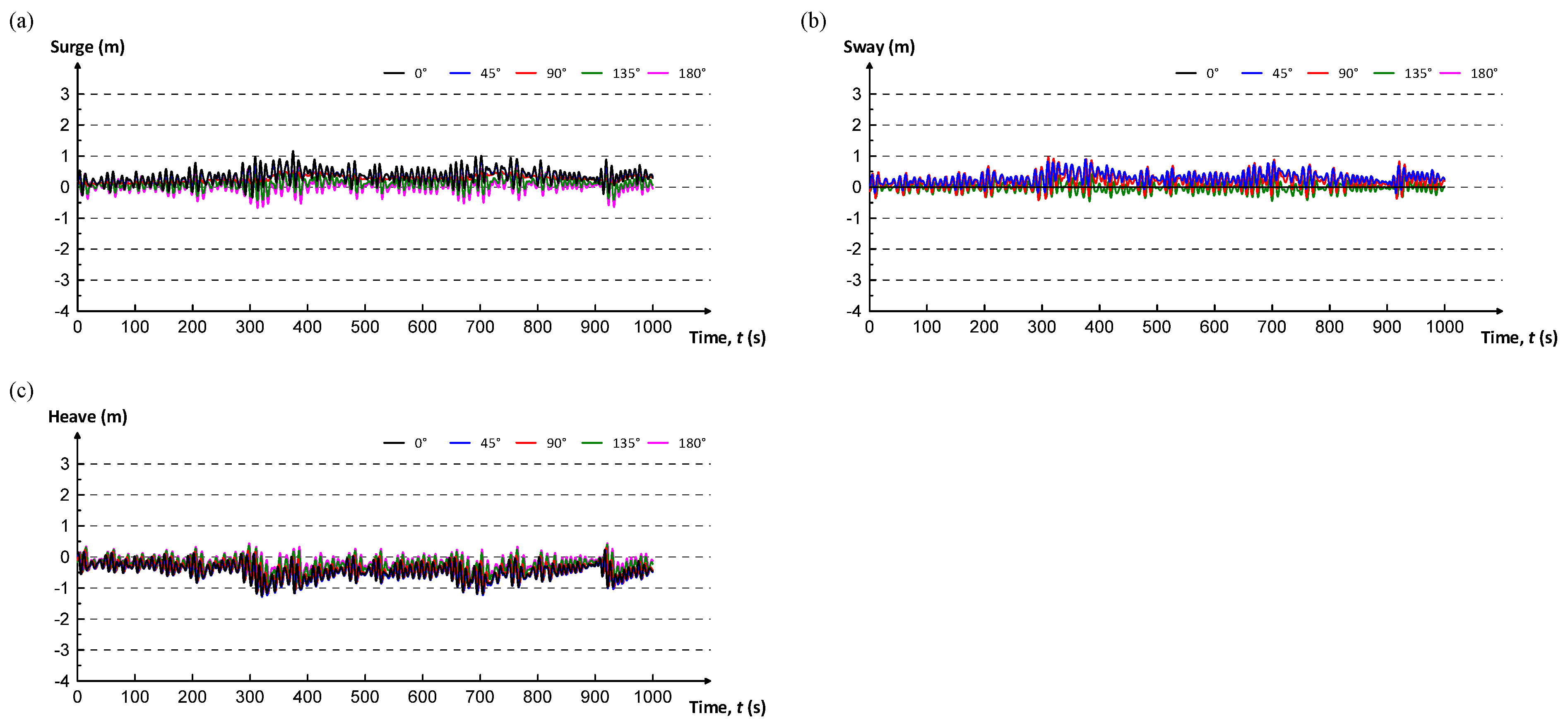
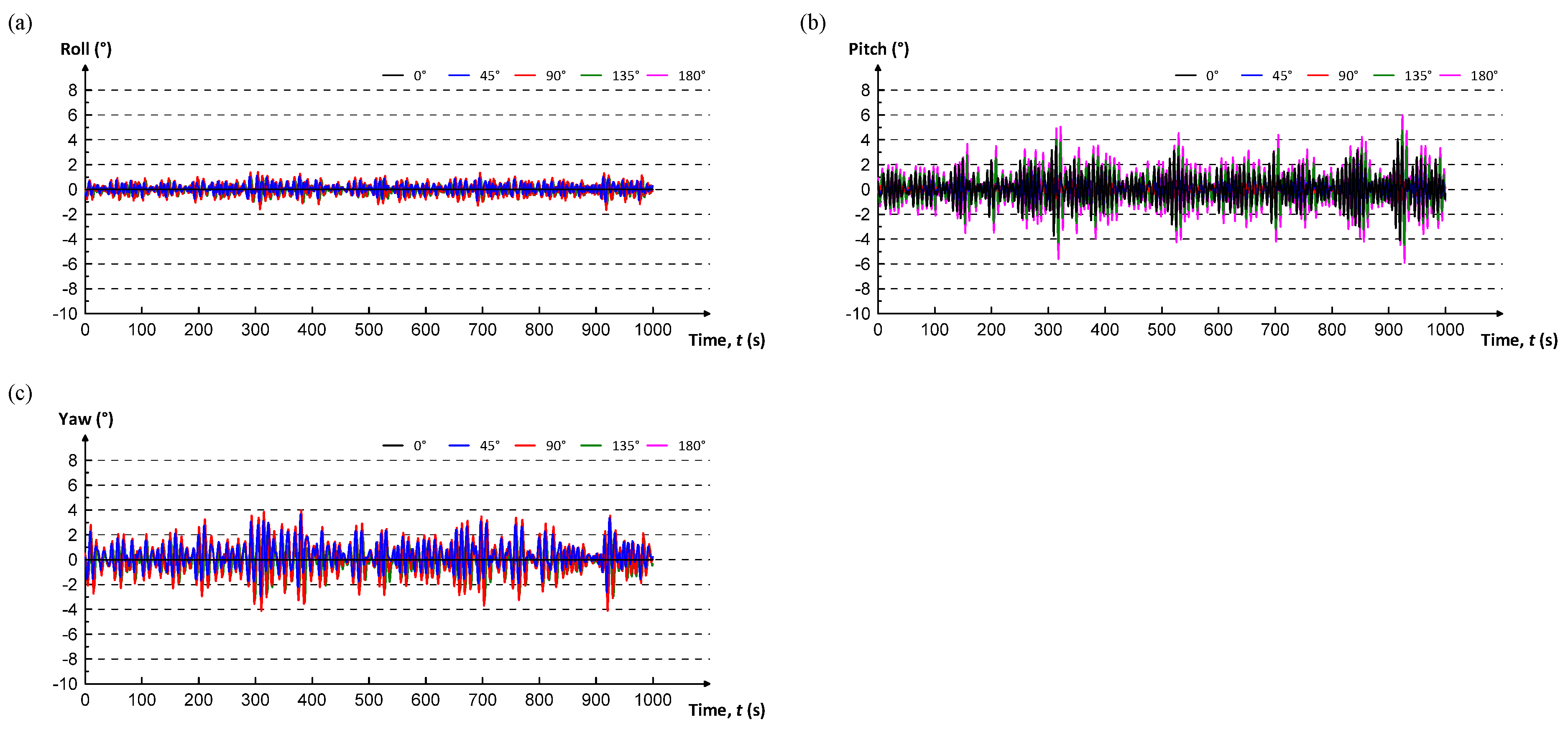
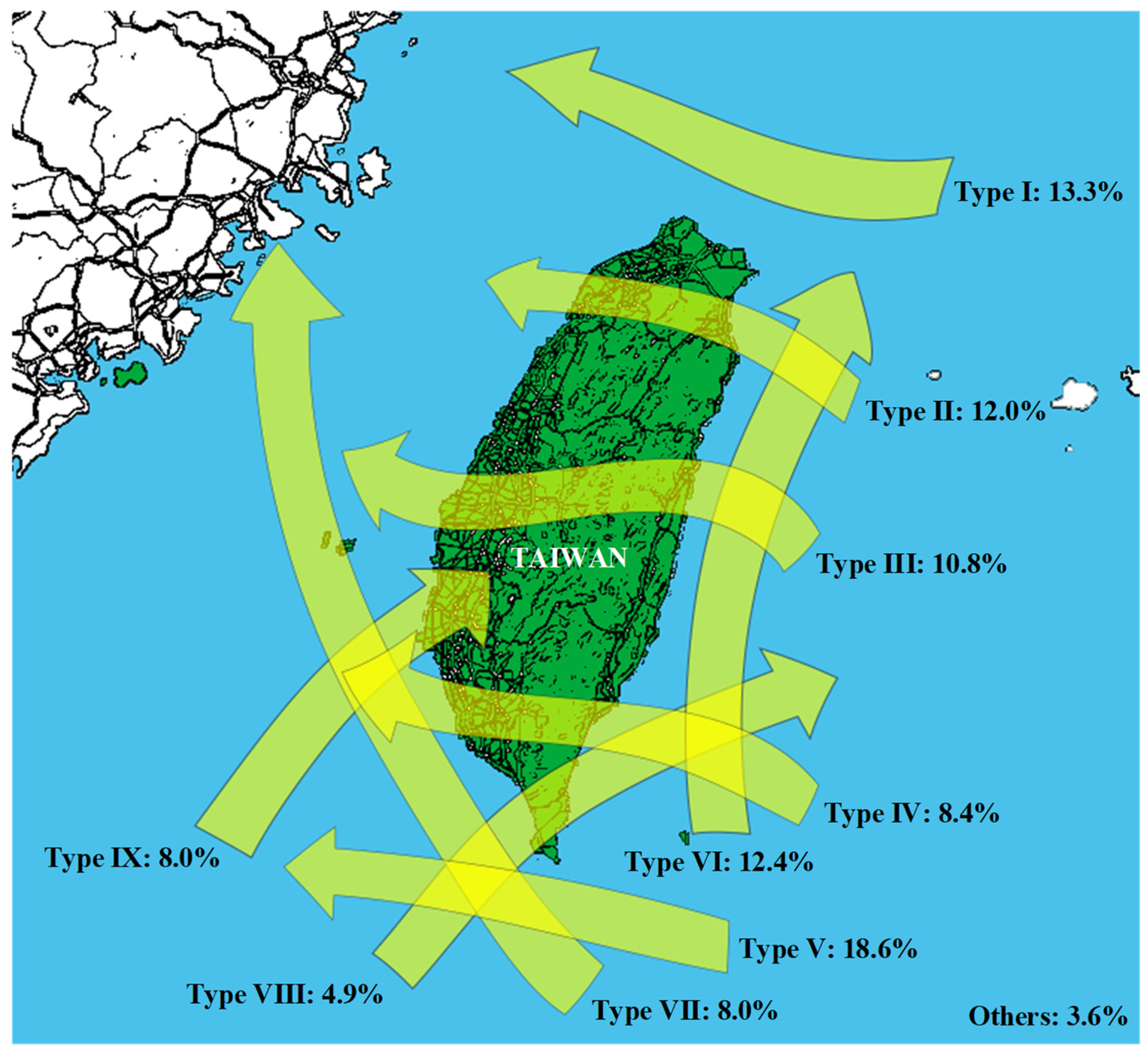
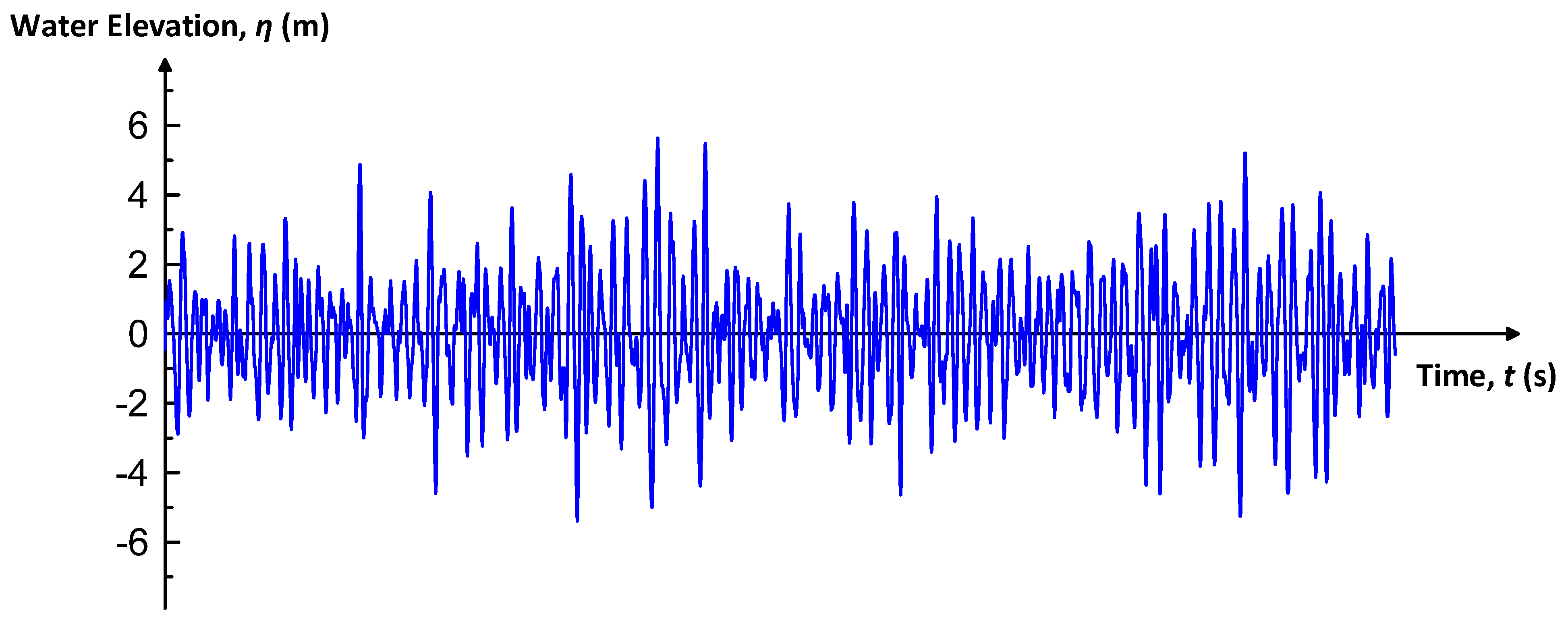
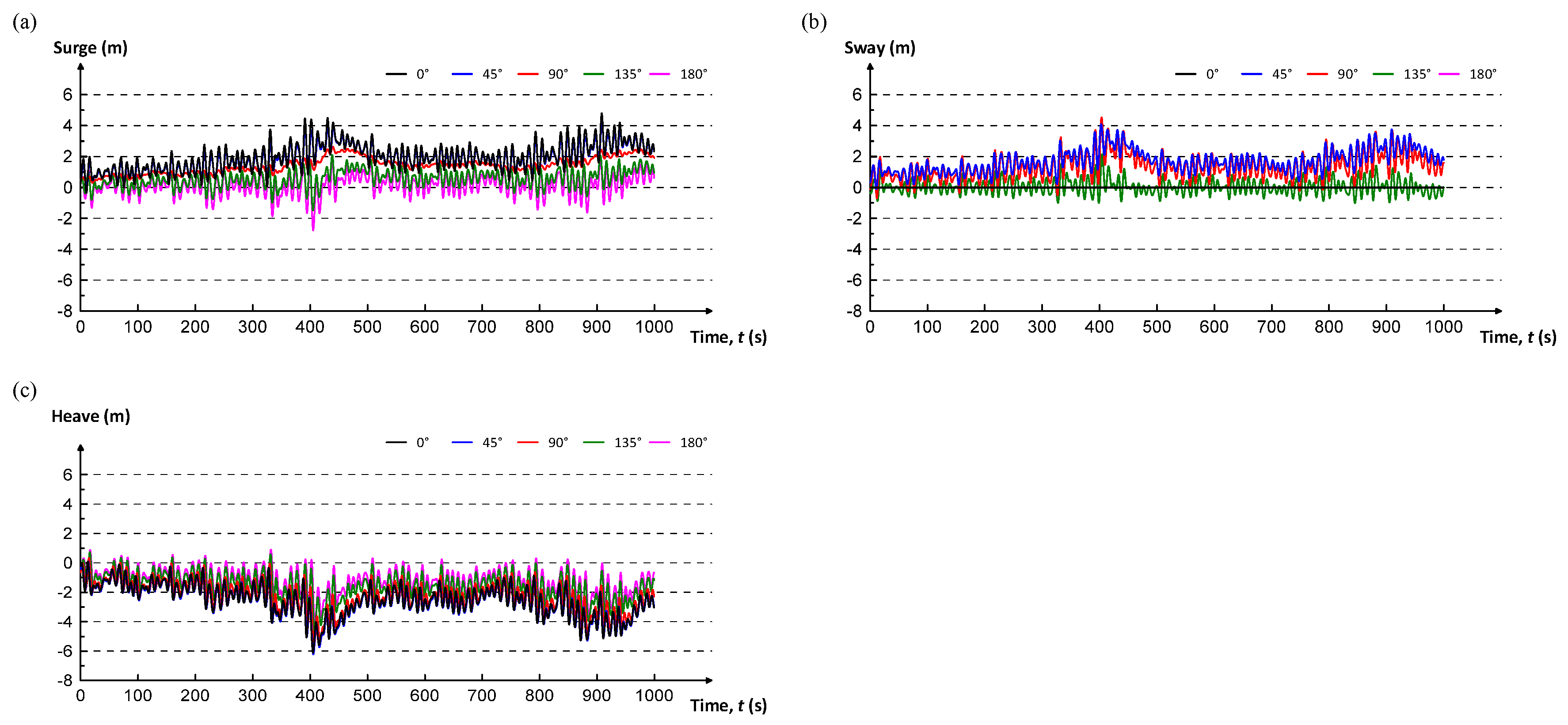

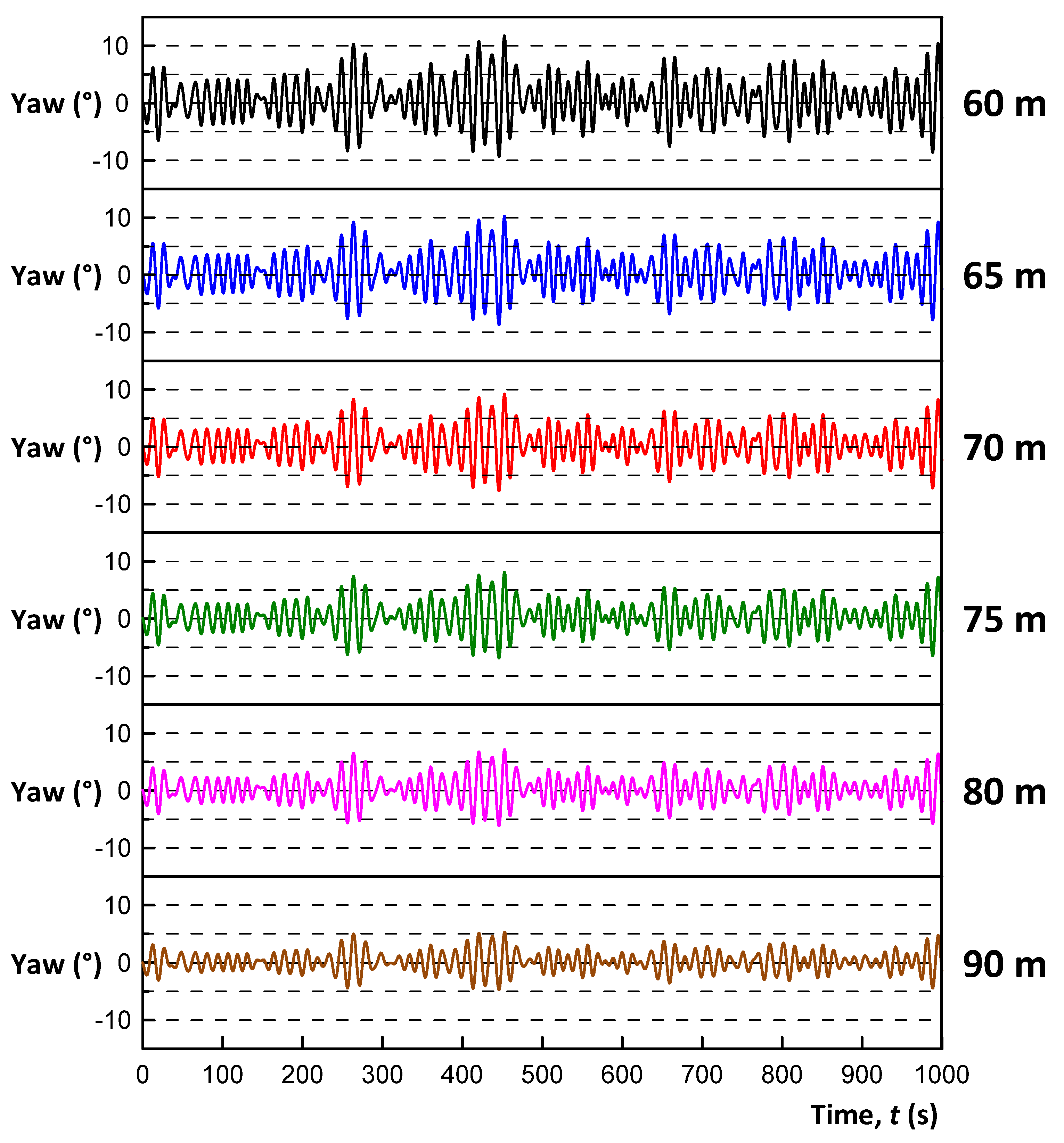


| Surge | Sway | Heave | Pitch | Yaw | Roll | |
|---|---|---|---|---|---|---|
| Drag force (N) | 406,497 | 291,639 | 457,572 | |||
| Projected area (m2) | 67.28 | 67.20 | 78.96 | |||
| Drag moment (N-m) | 223,137 | 227,444 | 374,457 | |||
| Drag moment area (m5) | 2153 | 2572 | 7770 | |||
| Cd/Cdr | 1.31 | 0.94 | 1.26 | 5.06 | 4.31 | 2.35 |
| Added Mass (kg) | Added Moment of Inertia (kg·m2) | |||||
|---|---|---|---|---|---|---|
| Surge | Sway | Heave | Pitch | Yaw | Roll | |
| Value | 235,442 | 291,820 | 310,403 | 220,548 | 217,155 | 98,398 |
| Ca/Car | 0.69 | 0.86 | 0.91 | 0.65 | 0.64 | 0.29 |
| Nominal diameter (m) | 0.133 |
| Diameter (m) | Outer = 0.24; Inner = 0 |
| Bending stiffness (kN·m2) | X = 0; Y = 0 |
| Axial stiffness (kN) | 1.52 × 106 |
| Weight in air (kN/m) | 3.473 |
| Displacement (kN/m) | 0.455 |
| Weight in water (kN/m) | 3.018 |
| Diameter to weight ratio (m/kN) | 0.08 |
| Minimum breaking load (kN) | 15,984 |
| Poisson ratio | 0.5 |
| Drag coefficient (no axial drag) | 2.4 |
| Lift coefficient | 0 |
| Added mass coefficient (only axial direction) | 1 |
| Allowable tension (kN) | 15,984 |
| γ | α | fp | |
|---|---|---|---|
| Normal wave condition | 1.59 | 0.0151 | 0.094 |
| Storm wave condition | 1.22 | 0.0047 | 0.105 |
Publisher’s Note: MDPI stays neutral with regard to jurisdictional claims in published maps and institutional affiliations. |
© 2021 by the authors. Licensee MDPI, Basel, Switzerland. This article is an open access article distributed under the terms and conditions of the Creative Commons Attribution (CC BY) license (https://creativecommons.org/licenses/by/4.0/).
Share and Cite
Yeh, P.-H.; Tsai, S.-Y.; Chen, W.-R.; Wu, S.-N.; Hsieh, M.-C.; Chen, B.-F. A Simple Nozzle-Diffuser Duct Used as a Kuroshio Energy Harvester. Processes 2021, 9, 1552. https://doi.org/10.3390/pr9091552
Yeh P-H, Tsai S-Y, Chen W-R, Wu S-N, Hsieh M-C, Chen B-F. A Simple Nozzle-Diffuser Duct Used as a Kuroshio Energy Harvester. Processes. 2021; 9(9):1552. https://doi.org/10.3390/pr9091552
Chicago/Turabian StyleYeh, Po-Hung, Shang-Yu Tsai, Wei-Ren Chen, Shing-Nan Wu, Meng-Chang Hsieh, and Bang-Fuh Chen. 2021. "A Simple Nozzle-Diffuser Duct Used as a Kuroshio Energy Harvester" Processes 9, no. 9: 1552. https://doi.org/10.3390/pr9091552






